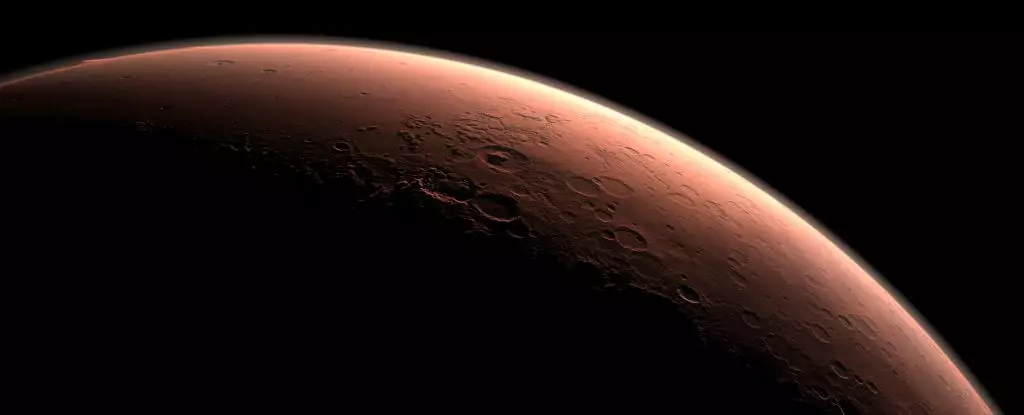Explored for centuries, Mars has captivated the imagination and ambitions of scientists and space enthusiasts alike. Despite extensive missions to uncover signs of life, definitive proof remains elusive. Most notably, the Viking landers in the 1970s marked a significant milestone in Martian exploration, launching a series of biological experiments that aimed to analyze Martian soil. Yet, as contemporary analyses suggest, the very methods used during these early investigations may have thwarted the discovery of life rather than revealing it.
In 1976, the Viking landers touched down on the Martian surface with the noble mission of uncovering extraterrestrial life. Equipped with an arsenal of scientific instruments, they were tasked with probing the planet’s soil for biosignatures—biological markers indicating life. However, decades later, researchers like astrobiologist Dirk Schulze-Makuch argue that the Viking missions could have been on the brink of an astounding discovery, only to undermine themselves in the process.
At that time, the scientific community operated under the paradigm that life, as we know it, requires water to survive. Consequently, the Viking landers employed methods that involved infusing Martian samples with liquids designed to stimulate metabolic activity and validate signs of life. However, these very processes may have inadvertently obliterated any evidence that had been present in the arid Martian environment.
One of the more controversial experiments conducted by Viking was the gas chromatograph-mass spectrometer (GCMS), which raised questions about contamination from terrestrial origin. Initial findings indicated the presence of chlorinated organics; this was initially dismissed as contamination attributed to cleaning agents before other research revealed that these compounds may naturally occur on Mars. This misinterpretation showcases the pitfalls of a prescriptive methodology rooted in Earth’s biosphere view—an approach that may overlook unique Martian conditions.
Schulze-Makuch posits that many of the Viking’s biological tests could have destroyed vital evidence of life. Take, for example, the labeled release and pyrolytic release experiments, which aimed to observe microbial metabolism and photosynthesis, respectively. However, the introduction of moisture may have overwhelmed any life forms adapted to arid environments, essentially “drowning” them—a curious parallel he draws to a human being placed in an ocean while stranded in a desert.
This suggests that the Viking experiments were predicated on a flawed premise: the assumption that Martian life would behave like Earth’s life forms, thriving with ample water. As we have come to understand more about extremophiles—organisms capable of surviving in extreme conditions—it has become clear that life can adapt to inhospitable environments, such as the aridity of Mars.
Schulze-Makuch’s appeal for a fresh approach in future Mars missions is significant. He emphasizes the need for scientists to carefully consider potential Martian ecologies when designing experiments. Instead of applying terrestrial assumptions to Martian organisms, researchers should investigate the unique adaptations that these organisms may exhibit. For instance, Schulze-Makuch hypothesizes that Martian life could potentially incorporate hydrogen peroxide, a compound known to sustain life under extreme conditions.
While the Viking results remain ambiguous, Schulze-Makuch’s assertions warrant a critical examination of the findings. The contradictory signals detected during the experiments could indicate that life was present but misidentified or disregarded, reflecting a broader theme of missed opportunities in the annals of astrobiological research.
The ongoing quest to detect life on Mars necessitates an evolved understanding of the planet’s ecosystem and the scientific paradigms that govern our methodologies. As we prepare for future missions, it becomes paramount to ask the right questions and design experiments that respect the planet’s unique characteristics.
The lessons drawn from past initiatives, particularly the Viking missions, serve as a testament to both the ingenuity and the limitations inherent in our early approaches. By acknowledging our previous missteps and embracing a more adaptable methodology grounded in interdisciplinary knowledge, the next wave of Mars exploration could potentially illuminate the mysteries of Martian life that have long eluded us.
Ruminating on the Viking landers’ experience allows us to recognize that while answers may still be distant, a new perspective could be the key to unlocking the secrets of life on Mars. As we embark upon this journey with renewed vigor and insight, we may yet discover that the red planet holds the answers we seek, revealing life in forms we have yet to imagine.


Leave a Reply